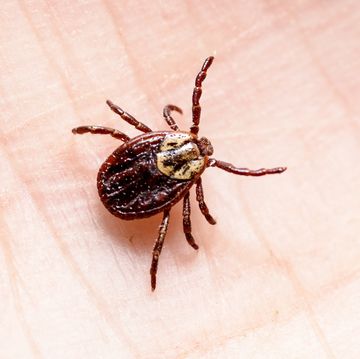If you're a warm weather lover, the thought of mild winters, long, steamy summers and warm fall days may make you positively chipper. But there’s a catch: The mild temperatures come with earlier—and longer-lasting—allergy seasons that are a doozy for the country’s 35 million seasonal allergy sufferers.
"Unexpectedly warm winter weather triggers the release of pollen and mold into the air earlier than usual, which makes allergy symptoms start sooner," says Stanley Fineman, MD, president of the American College of Allergy, Asthma and Immunology. "There's been a general warming trend that we've seen in the last few years with the spring and summer seasons starting earlier and lasting longer." And with summer-like weather stretching into fall, that means fall allergens like ragweed, which tend to rev up in mid-August and last until cold weather arrives, are all the more potent, too.
While it’s not really shocking that warmer weather throughout the year means a longer allergy season, what is surprising is that symptoms are getting more intense.
More from Prevention: Enjoy the Great Outdoors During Allergy Season
"Blame it on what we call the priming effect," says Dr. Fineman. Here’s how it works: An unseasonable warm front means that an allergic person is exposed to pollen and will have an initial reaction (achoo!). Then the temperature drops along with the pollen counts for a week or two (phew). But then the weather warms again, releasing more pollen, and the allergy sufferer—who’s already been primed the first time around—will have an even worse reaction (ugh).
These six tips can help you manage your symptoms year round—and get some much-needed relief:
1. Know your triggers. Not every seasonal allergy sufferer will be bothered by the same things. The best way to pinpoint your specific triggers is to get a skin test from an allergist, says Dr. Fineman. Once you know your triggers, you can get your symptoms under control.
2. Take your meds before symptoms start. "The best thing to do is to take allergy medication before you're exposed to pollen or other triggers," says Dr. Fineman. "Doctors in the southern states usually advise beginning in March, but [in warmer years] February is the time to begin your meds because the pollen season started early." Go to the National Allergy Bureau to find out what the pollen or mold counts are in your area, and sign up for email updates.
3. Close your windows. It may be tempting to crack your car or kitchen windows during unseasonably warm weather, but doing so allows pollen to drift inside and settle into your carpet and upholstery. Keep windows closed to help avoid an allergic reaction.
4. Clear the air. A good air filter can help lessen your odds of a reaction for any pollen does get indoors. Dr. Fineman advises choosing a filter with a MERV rating of 8 or higher (MERV ratings are the standard used to measure a filter's efficiency; the higher the rating, the fewer airborne particles that can pass through the filter).
5. Watch out during yardwork. Spring's budding trees can come back to haunt allergy sufferers when fall rolls around: Raking leaves can stir up pollen and mold and release them into the air, triggering your symptoms. Cover your nose and mouth with a face mask or scarf when gardening or raking. (Check out more tips for how to allergy-proof your yard.)
6. Wash it off. If you're working or exercising outside—especially around midday when both temperatures and pollen counts tend to be highest—take a shower and change your clothes as soon as you come inside to help remove any pollen you may have picked up along the way.
More from Prevention: Create an Allergen-Free Home













